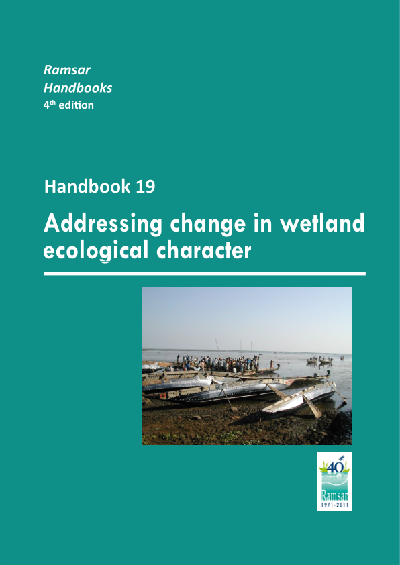



收藏
纠错
《拉姆萨尔指南》已被各成员国政府作为一个整体采用,并越来越多地涉及“环境”或“水”部门以外的其他部门的关键作用。因此,非常重要的是,这些手册应被所有其行为可能受益于或影响到湿地的明智利用的所有人使用。
拉姆萨尔手册19:论湿地生态特征的变化 The purpose of the Ramsar Handbooks is to organize guidance material from relevant decisionsadopted by the Contracting Parties over the years, according to subject themes. This helps practitioners to implement the internationally-agreed best practice in a way that is convenient tohandle and more naturally matches their own everyday working environment. The intended readership includes national and local staff of the government departments,ministries and agencies that act as Administrative Authorities for the Ramsar Convention in eachcountry.Equally important users in many cases are managers of individual wetland areas, as someaspects of the guidance relate specifically to site management. The Ramsar guidance has been adopted by member governments as a whole, and increasingly itaddresses itself to the crucial roles of other sectors beyond the "environment”or "water"sectors. Itis thus very important that these Handbooks should be used by all whose actions may benefit fromor impact upon the wise use of wetlands. A vital first step in each country therefore is to ensure adequate dissemination of these Handbooksto all who need or can benefit from them.Copies are freely available in PDF format from the Ramsar Secretariat in three languages on CD-ROM or by download from the Convention website(www.ramsar.org). Other early steps would be, in each particular context, to clarify lines of responsibility and activelycheck how to align the terms used and approaches described with the reader's own jurisdiction,operating circumstances, and organizational structures. Much of the text can be used in a proactive sense, as a basis for framing policies, plans andactivities, sometimes by simply importing relevant sections into national and local materials. Itcan also be used in a reactive sense as a source of help and ideas for responding to problems andopportunities, navigating subjects by the need of the user. Cross-references, original sources, and further reading are liberally cited: the Handbooks will oftennot be the"last word" , but they provide a helpful " route-map" to further sources of informationand support. 【更多详情,请下载:拉姆萨尔手册19:论湿地生态特征的变化】
